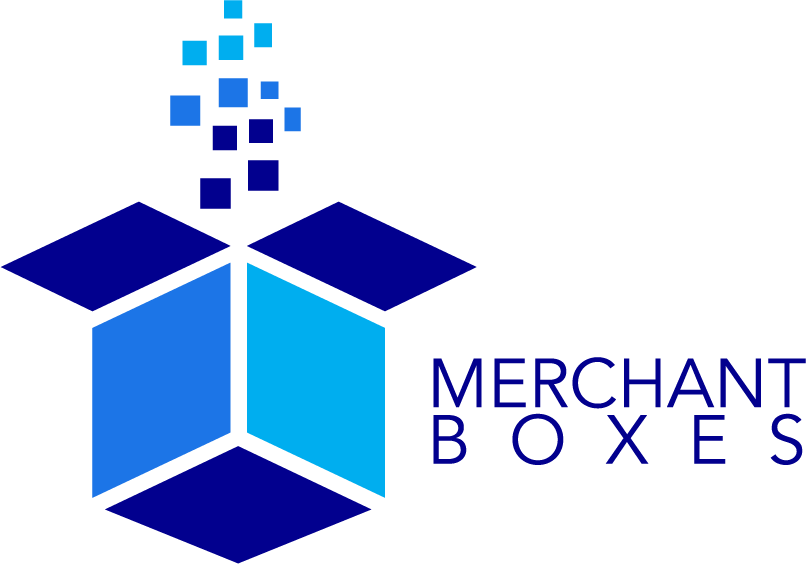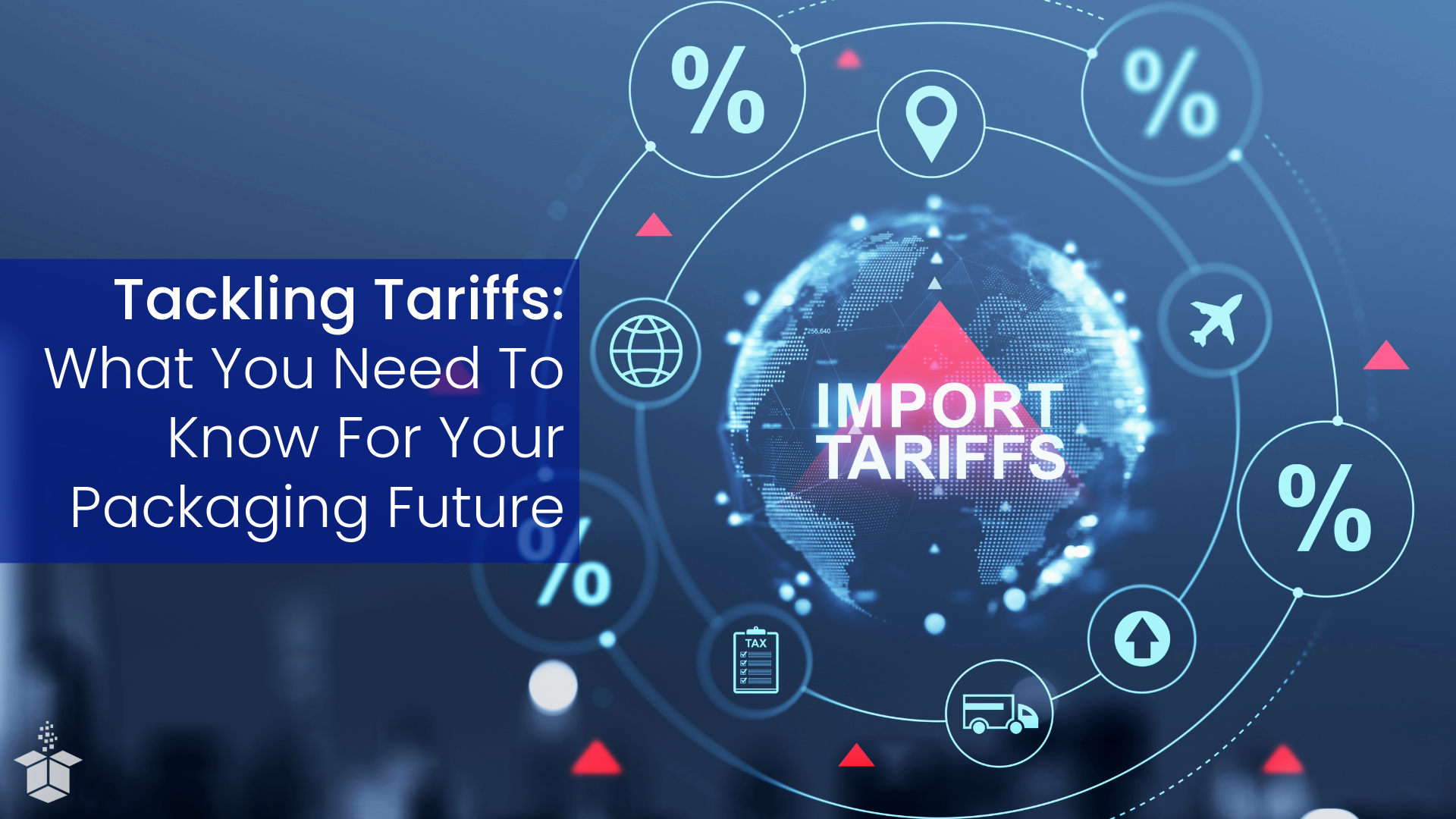Tackling Tariffs: What You Need To Know For Your Packaging Future
Your packaging cost may have just gone up thanks to the new tariffs imposed by the US government as of April 2, 2025. While we know that everyone would love to just ignore them, that’s just not how it works (we checked). Instead, your packaging costs may increase as much as 10% and potentially much more.
So now what? Now what do you do? First, take a deep breath. Things are changing moment by moment. Second, now is when your packaging is the most important thing to focus on. Think about it. If you have a great product in generic packaging, it’s probably not going to sell at the price you want. But if you invest in your packaging, you can charge a premium for your product, recover your costs, and make a higher ROI. And how do you do that? We are so glad you asked! You need a packaging professional who understands not only packaging design but global supply chains and packaging procurement. Luckily for you, you are already on the website of that packaging expert. Hi! We’re glad you are here!
What Are Tariffs and How Do They Work?
First, let’s start with what tariffs are and how they work. Essentially, tariffs are taxes or duties imposed by a government on imported goods. These charges are typically added to the cost of foreign products to encourage domestic purchasing and production or to level the playing field between imported and locally made goods. When a tariff is applied, the importer (often a distributor or manufacturer) pays the extra cost, which is then passed down the supply chain and eventually reaches businesses and consumers.
In the packaging industry, tariffs often affect raw materials like paper, plastic, tin, steel and aluminum, as well as finished packaging products sourced from overseas. So, all in all, tariffs are going to raise prices. This means you need to start thinking about how your packaging budget is going to change.
The Impact of Tariffs on Businesses and Packaging
We know that tariffs will ultimately raise prices but how does that happen and what is the impact on businesses in the United States?
Increased Material Costs – If your packaging materials are sourced from tariff-affected regions, you’ll see higher raw material costs. Many packaging products require materials such as corrugated cardboard, plastic films, or aluminum foils, which are often imported due to cost and availability. Tariffs on these materials can cause price spikes, making it more expensive to produce packaging domestically or internationally. So regardless of where your packaging is produced, there will be an impact on cost.
Supply Chain Disruptions – With tariffs in place, suppliers may increase prices or face delays due to shifting trade routes and new regulatory requirements. Many companies may need to reconfigure their supply chains, which can lead to production bottlenecks, longer lead times, and increased transportation expenses.
Higher Product Prices – To compensate for higher packaging costs, many brands must either absorb the added expense or increase product prices. This can affect competitiveness in the market, especially for small businesses that operate on thinner margins.
Competitive Challenges – If competitors source materials domestically or have long-term supplier contracts, they may have an advantage in maintaining lower costs. Companies that rely heavily on imports may find themselves at a disadvantage if they do not explore alternative sourcing or cost-saving packaging strategies.
Reduced Profit Margins – When tariffs drive up packaging costs, businesses often see shrinking profit margins unless they adjust pricing or find ways to optimize their packaging expenses. This is particularly challenging for e-commerce and retail brands where packaging is essential for branding, protection, and customer experience.
How Tariffs Affect Different Industries
Food and Beverage
For food and beverage companies, packaging is essential for branding and product preservation. Tariffs on imported packaging materials like aluminum cans or plastic containers can significantly increase costs, leading to higher retail prices. Small food businesses and specialty brands may struggle the most, as they typically don’t have the purchasing power to negotiate bulk discounts, or the balance sheet to absorb the cost.
E-commerce and Retail
Online retailers rely heavily on packaging for shipping and presentation. With rising costs due to tariffs on cardboard, poly mailers, and other materials, businesses may have to raise shipping fees or find ways to optimize packaging to maintain margins. Shrinkflation anyone?
Cannabis Industry
The cannabis industry already faces strict regulatory requirements for packaging, including child-resistant containers and specific labeling rules. Many of these specialized packaging solutions are sourced internationally. With tariffs, costs for compliant packaging will rise, potentially squeezing margins for dispensaries and product manufacturers. Not to mention the added costs for things like tins, specialized glass, and vape hardware are going to cost more.
Beauty and Personal Care
Luxury and personal care brands often use high-end, custom packaging that is produced overseas for cost-effectiveness and quality. Increased tariffs on premium packaging materials, such as glass bottles or decorative boxes, could lead to higher product prices or a shift toward alternative packaging solutions.
Pharmaceuticals
The pharmaceutical industry depends on sterile and compliant packaging materials, many of which are imported. Higher tariffs on plastic vials, blister packs, and other materials could increase healthcare costs, impacting both manufacturers and consumers.
Why It’s Still Cheaper to Get Packaging from Other Countries
Despite tariffs, international packaging production and sourcing are often still more cost-effective. Here’s why:
Lower Labor Costs – Many packaging manufacturers in countries like China, Vietnam, and India operate with significantly lower labor costs than US manufacturers.
Economies of Scale – Many international suppliers produce packaging at massive volumes, reducing unit costs.
Material Sourcing – Some countries have easier access to raw materials, allowing them to produce packaging at a lower cost despite tariffs.
Specialized Manufacturing – Many overseas manufacturers have decades of experience and advanced technology, making them highly efficient in producing high-quality, custom packaging.
Even with tariffs, the price gap between domestic and international packaging is often significant enough that sourcing internationally still makes financial sense. However, navigating these costs and choosing the right suppliers is where expertise is needed.
Why You Need a Custom Packaging Company Like Merchant Boxes
Now you know about tariffs, the impact they will have on businesses, and why it still might be more cost-effective to use overseas manufacturers for your packaging. And we are sure you still have a million questions about how it is going to affect you specifically. That is where we come in. Our team are experts in not only packaging procurement but international supply chains and we can help you navigate this new reality. Here are a few things that Merchant Boxes can do to help you going forward:
Navigating Complex Supply Chains
Understanding where to source packaging in a tariff-heavy environment requires expertise. We analyze global markets to find the best balance between cost, quality, and lead time, ensuring that your business isn’t overpaying due to tariffs.
Cost Optimization and Procurement Strategies
Tariffs don’t have to mean higher costs for you. With strategic supplier partnerships and bulk procurement options, we help businesses secure the best pricing while maintaining quality. We negotiate with suppliers, explore alternative materials, and optimize logistics to keep your costs as low as possible.
Custom Packaging That Adds Value
Instead of seeing packaging as just another cost, we help you turn it into a strategic asset. High-quality, well-designed packaging can justify premium pricing for your product, helping you maintain profitability even as costs rise. Investing in strong branding and functionality can make your product stand out, driving higher sales and customer loyalty.
Compliance and Regulatory Guidance
Tariffs aren’t the only challenge when importing packaging. Regulations, labeling requirements, and environmental standards all play a role in procurement decisions. We help businesses stay compliant while ensuring smooth import processes, and avoiding unnecessary fees or delays.
Supply Chain Flexibility
By working with a packaging expert, you gain access to a diverse network of suppliers, both domestic and international. This flexibility allows you to adapt quickly if tariffs shift, ensuring that your packaging supply remains reliable and cost-effective.
Final Thoughts
We get it. These tariffs are rough at best. But you are not alone in navigating this new reality. Our team is ready to help you design and procure the best packaging for your brand, whether it is internationally or domestically. We can find the best option for your business. By strategically investing in custom packaging, you can turn this challenge into an opportunity. Instead of simply absorbing increased costs, you can use better packaging to differentiate your brand, command higher prices, and improve customer perception. The only thing certain right now is that there is an impact that we all need to understand. And as the tariffs and regulations continue to shift, you need a partner that understands your business, and how best to navigate these uncertain times. Give us a call or click the button below to get in touch. We are here and ready to help.





